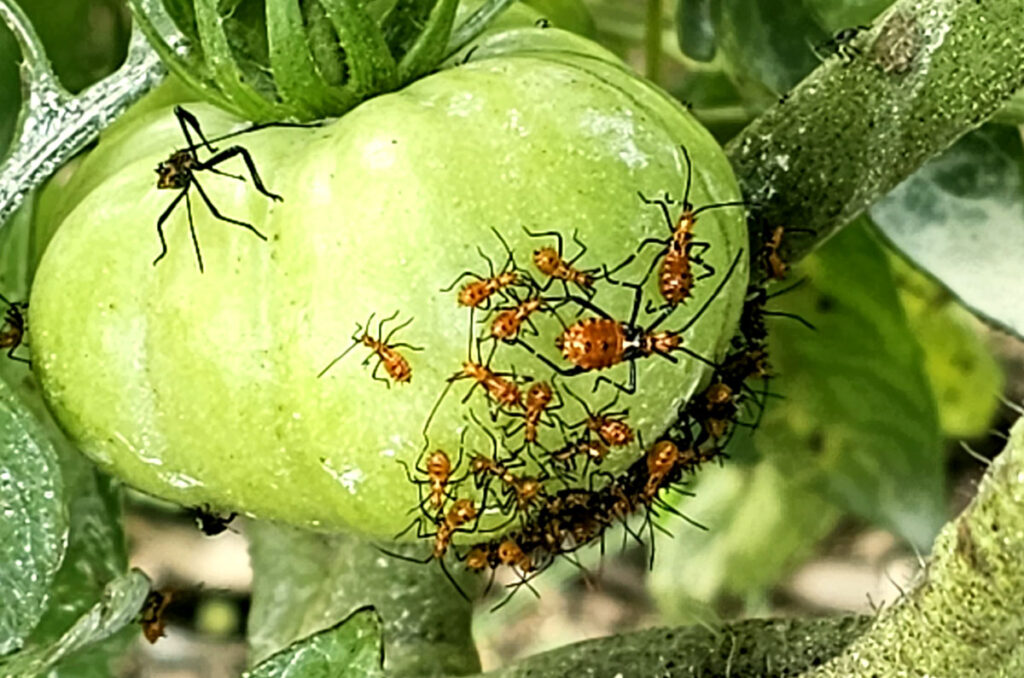Wherever you are on your homesteading journey, practicing your homesteading skills will help you create a successful and enjoyable lifestyle.
So, how do you practice homesteading?
No matter what skill you want to learn or lifestyle change you wish to implement, use this simple six-step process to start practicing today.
- Determine Your Homesteading Goals
- Select the Skills You Need to Practice
- Research and Gather Resources
- Schedule Time to Learn and Practice
- Learn from Your Mistakes
- Be a Lifelong Learner
Determine Your Homesteading Goals
It’s important to understand why you are learning a new skill before beginning.
For example, if you want to learn to can tomatoes from your garden, what is the purpose? Are you overwhelmed with tomatoes and need to preserve the excess? Do you want to make sauce from scratch instead of buying it? How does home-canned food fit into your family’s meal plans?

You don’t have to overthink it, but it’s important to have an end-goal and purpose for the skill you’re learning. Sometimes new skills take time to learn and you can get frustrated. Knowing why you’re learning this skill and it’s benefits to your homestead can get you through the more challenging parts of learning.
Select the Skills you Need to Practice
Once you’ve determined your homesteading goals, you’ll probably have created a list of several skills you need to learn. Download this FREE PDF: 101 Homesteading Skills for inspiration!
Or, if you’re not sure where to start, or are overwhelmed with choices, read: What are Your Unique Homesteading Skills.
Some examples of new skills I’ve recently learned include: making kombucha, pressure canning, building field fences, and gardening in Zone 9 instead of Zone 6. For each of these skills, there was a purpose and a reason to learn them. It took time and practice (the kombucha was more like vinegar when I started!), but as I continued learning, my skills improved which in turn, improved our homestead life.
Research and Gather Resources
Your greatest advantage to success is being prepared to learn your new skill.
Yes, many people can just jump right in and learn as they go, but for others, having the knowledge and tools in advance makes learning easier. Just like the first day of school for kids, having your backpack filled with the correct school supplies and a laptop or books of knowledge at hand, makes learning so much easier.
Before you begin, find books, online articles, videos, or courses that cover the skills you want to learn. If possible, seek guidance from experienced homesteaders or experts in the field. They can provide valuable tips, answer your questions, and offer hands-on learning. Make sure to gather the necessary tools, equipment, and materials.

When my husband and I set a goal to finish fencing our property, we watched many videos of others teaching setting H-braces, stringing fence, and all the other steps involved. We asked advice at the local farm stores and researched the best type of wire for our property goals. Once we acquired the proper supplies and tools, we were much more confident setting up our new fencing and had few problems thanks to all of our prep work.
Schedule Time to Learn and Practice
One problem many new homesteaders have encountered is planning too many activities in the time available. This leads to unfinished projects, frustration, and overwhelm.
It’s important to start small. Break down learning a new skill or project into small, manageable steps. Make sure you have the time available to learn, schedule it if necessary.
Look at the goal you are trying to achieve with your new skill. Can you break it down into time slots during the week? Or do you need to set aside a whole day to complete it?

Some skills can be learned after a few attempts like water bath canning or seed saving. Other skills, like gardening or caring for livestock take years of learning and improving. These larger categories of skills need to be broken down into smaller skill sets to learn. Ongoing planning and scheduling are essential as you gradually expand on your self-sufficiency skills.
Keeping a journal, planner, or even a desktop calendar will help you manage your time. Track your progress too. My garden journal is full of dates projects were completed, successes and failures, and what I’ve learned about my garden.
Remember: you don’t have to do everything at once. Take it one step at a time and enjoy the process.
Learn from Your Mistakes
Expect occasional challenges and setback. Learning new homesteading skills takes time and it’s essential to remain patient and persistent.
Look at these challenges as a chance to learn and improve. When you encounter problems, research solutions and experiment with different approaches.
For example, when I lived in gardening Zone 6, I grew bushels of practically perfect tomatoes and filled my canning jars every fall. I rarely saw a pest or disease other than occasional tomato worms. However, when I started growing tomatoes in Zone 9, I was faced with new challenges and lost crops. Snails, root-knot nematodes, leaf-footed insects – every season they nearly wiped out my tomatoes. I felt ready to give up!

But instead, I searched online and found reliable information. I asked questions in Facebook gardening groups that were local to my community. I watched videos of local gardeners teaching. I read nursery blogs and talked to neighbors who had grown tomatoes for years.
I finally came up with a plan to improve my soil and make better tomato variety selections. I learned about netting and when to cover my tomatoes to keep pests out.
It’s not that we are failures, but that we aren’t armed with knowledge or experience. Set yourself up for success with a plan and time to implement it. Learn from the challenges and you’ll only get better with time.
Be a Lifelong Learner
Part of the homesteading journey is being a lifelong learner. There are always new things to learn on a homestead. Here are five ways you can continue practicing your new homesteading skills.
Expand and Experiment
Once you’ve gained a good grasp of the basics, experiment and expand your skill set. Try new techniques, methods, or variations to obtain a deeper understanding. For example, once you’ve learned how to successfully grow apple trees, try grafting.
Mentorship
Find a mentor. Seek out someone knowledgeable who you can reach out to when feel stuck or unsure. A good mentor is a treasure! And, when the time comes, become a mentor yourself. Teaching others can help you practice your homesteading skills and solidify your understanding of that skill. Plus, you’re giving back to your homesteading community.
Courses and Workshops
Whether online or in-person, learn from someone who has taught many people a skill set. This teacher has been asked many questions over time and has developed the skills to teach you how to become a better homesteader.
Evaluate and Adjust
Life is ever-changing and from time to time you may need to adjust your learning strategy. Modify your goals as needed. No need to stick to something that isn’t working. Perhaps you don’t see eye-to-eye with your mentor and need to dissolve that arrangement, or you prefer group learning over one-on-one. What’s important is finding a learning style that best suites you and your homestead.
Celebrate the Milestones
Recognize and celebrate your achievements as you progress. From something as simple as checking off a box on your to-do list, to a family dinner celebration – it’s essential to acknowledge this positive step on your homesteading journey.

In Conclusion
Remember that homesteading is a journey. Learning and practicing homesteading skills can be immensely rewarding as you become more self-sufficient and capable of managing various aspects of your homestead.
Set good goals and determine the skills you need to learn to achieve those goals. Make time to learn how to do the skills and then practice them. When things don’t go as planned, reevaluate, and learn. Keep practicing then teach others what you’ve learned.
Every goal achieved; every skill learned is a win. Celebrate!
[…] homestead is unique. Knowing why you want to homestead, and what you want to do on your homestead will help you answer that question. Review the first few sections of this article […]